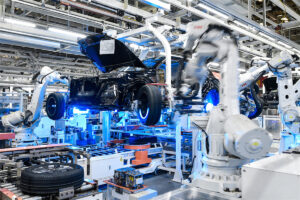
Every petrolhead has experienced that electrifying moment—whether it’s watching a chase scene in Mad Max, admiring the sleek lines of a Mustang in Bullitt, or catching a glimpse of a beautifully restored classic at a local car meet. Your heart races, your palms sweat, and you think, “I want that.” But turning automotive dreams into garage-bay reality requires more than enthusiasm and a well-worn copy of Fast & Furious. It demands knowledge, dedication, and a clear understanding of what it takes to build, maintain, and protect your pride and joy.
Australia’s car culture has exploded in recent years, with enthusiasts across the country diving into projects ranging from classic restorations to modern performance builds. Whether you’re part of Melbourne’s thriving custom scene, Sydney’s import community, or Perth’s growing restoration movement, there’s never been a better time to get hands-on with your automotive passion. But before you start tearing into that project car sitting in your driveway, let’s explore the realities of building something special—and how to do it right.
The Australian Automotive Scene: More Than Just Commodores and Falcons
Australia’s love affair with cars runs deeper than our now-defunct local manufacturing industry. The closure of Holden and Ford’s Australian operations hit hard, but it sparked an unexpected renaissance in DIY automotive culture. Without the steady stream of locally-made V8 sedans, enthusiasts started looking elsewhere for their fix, and that’s when things got interesting.
Today’s Australian car scene is incredibly diverse. You’ll find JDM import lovers spending weekends at Daikoku-style meets, classic muscle car devotees restoring Monaros and GTHOs, and modern performance junkies modifying everything from hot hatches to European sports cars. The common thread? A hands-on approach that previous generations might have outsourced to mechanics.
Social media has played a massive role in this shift. YouTube tutorials have demystified everything from welding techniques to ECU tuning. Instagram showcases builds from suburban garages that rival professional shops. Facebook groups connect enthusiasts across vast distances, turning Australia’s geographical isolation into a connected community of knowledge-sharers and problem-solvers.
“Building or maintaining a project car isn’t just about buying parts and bolting them on. It’s about understanding systems, developing skills, and accepting that some things are worth doing right the first time—even if it means admitting you need professional help.”
The Foundation: Maintenance and Restoration Essentials
Before you start fantasizing about turbo upgrades and carbon fiber body kits, let’s talk about the unsexy but crucial foundation of any good build: proper maintenance and restoration. This is where most project cars live or die, and it’s where being honest about your skills and resources matters most.
Take wheels, for instance. They’re literally where the rubber meets the road, yet they’re often neglected until something goes catastrophically wrong. Curb rash, corrosion, and structural damage aren’t just cosmetic issues—they compromise safety and performance. For Melbourne-based enthusiasts dealing with everything from CBD parking nightmares to the occasional country road adventure, keeping wheels in proper condition is non-negotiable. Professional services like Wheel Repairs in Melbourne specialize in fixing everything from minor scrapes to major structural damage, often at a fraction of the cost of new wheels. It’s one of those situations where trying to DIY can actually cost more in the long run, especially if you’re working with expensive alloys or rare vintage wheels.
This principle extends across your entire build. While there’s immense satisfaction in doing work yourself, knowing when to call in specialists isn’t admitting defeat—it’s being smart. Can you change your own oil? Absolutely, and you should. Can you rebarrel a set of three-piece wheels in your garage without proper equipment? Probably not safely.
The restoration side gets even more complex. If you’re bringing a classic back from the dead, you’re dealing with rust, worn bushings, perished rubber, and technology that predates diagnostic computers. Modern cars present different challenges: electronic systems that need specialized tools, integrated components that can’t be easily modified, and software that won’t play nice with aftermarket parts.
Start with a realistic assessment of your project. Walk around it with a notepad and actually write down everything that needs attention. Not just the obvious stuff—the worn seats, the faded paint, the rough idle. Look underneath. Check the chassis rails. Inspect brake lines. Open the electrical boxes. This unglamorous inventory is your reality check and your roadmap.
Building a Knowledge Base: Learning as You Go
The most valuable tool in your automotive arsenal isn’t in your toolbox—it’s between your ears. Building skills, understanding systems, and knowing when you’re out of your depth separates successful builders from those with half-finished projects gathering dust.
Start with the basics. If you can’t change your own oil, bleed brakes, or replace suspension components, you’re not ready for major modifications. These foundational skills teach you how cars work, build confidence, and save money on routine maintenance that would otherwise kill your project budget. YouTube is an incredible resource, but nothing beats hands-on experience with basic repairs.
Join local car clubs and online communities specific to your vehicle or interest area. These groups are goldmines of collective knowledge. Someone has already made the mistakes you’re about to make, figured out the solutions, and is willing to share that information. They can recommend honest mechanics, warn you away from dodgy parts suppliers, and might even have spare parts gathering dust in their own garages.
Invest in proper tools as you progress. This doesn’t mean buying everything at once—that’s how you go broke. Buy quality tools as you need them for specific jobs. A good socket set, torque wrench, and jack stands should be your starting point. From there, add tools as projects require them. That specialty tool you’ll use once? Rent it or borrow it. The basic tools you’ll use constantly? Buy once, cry once with quality brands.
Document everything. Take photos before and after each job. Keep receipts. Maintain a build thread online or a physical notebook. Future you will thank present you when you’re trying to remember torque specs, part numbers, or which modification caused that new vibration. This documentation also adds value when selling—a well-documented build history can significantly increase buyer confidence and resale value.
Most importantly, be patient with yourself and your project. Rome wasn’t built in a day, and neither is a proper build. Social media creates unrealistic expectations with time-lapse transformations that skip the weeks of waiting for parts, the jobs that take three times longer than expected, and the inevitable setbacks. Your build is happening in the real world with real constraints. Embrace the journey, learn from mistakes, and celebrate the small victories along the way.
Power Moves: Understanding Performance Upgrades
Once your foundation is solid, it’s time to talk about what most people actually want to discuss: making it faster. Performance modifications are where automotive dreams get real, and where inexperienced builders make expensive mistakes. Let’s break down what actually works and what’s mostly marketing hype.
The engine is the heart of any performance build, and engine swaps represent the ultimate expression of “go big or go home.” In Australia, the LS engine family has become the default choice for serious builders, and for good reason. These American V8s offer incredible bang-for-buck, with reliable power, huge aftermarket support, and surprising fuel efficiency when driven sanely (which, let’s be honest, is rare).
The LS3, in particular, has become the gold standard for Australian enthusiasts. Producing 436 horsepower in stock form, it’s the engine GM put in the Corvette C6, and it’s everything you want in a performance motor: aluminum construction for weight savings, proven reliability, and enough factory power that you might not even need to modify it. For those serious about their builds, finding a quality LS3 engine for sale from a reputable supplier is the first step in a transformation that can turn everything from a vintage HQ Holden to a modern 86/BRZ into a proper weapon.
“Dropping a new engine into a car isn’t like swapping graphics cards in your gaming PC. It’s a massive undertaking involving custom mounts, modified or replaced transmissions, upgraded cooling systems, reinforced drivelines, and complete rewiring.”
This cascading requirement for supporting modifications is where budgets explode. That $15,000 engine becomes a $40,000 project once you factor in everything it needs to actually work properly. This isn’t meant to discourage you—LS swaps are fantastic when done right—but you need to go in with eyes open.
Beyond engine swaps, there’s a whole world of bolt-on modifications. Cold air intakes, exhaust systems, ECU tunes, forced induction—all promising more power, better throttle response, and that addictive boost sensation. Some deliver on their promises. Others are expensive noise makers that might actually hurt performance. Do your research, find reputable suppliers, and remember that dyno numbers don’t tell the whole story. How a car delivers its power matters more than peak numbers.
Protecting Your Investment: Storage and Long-Term Care
Here’s something nobody talks about enough: what happens when you’re not working on your car? Whether you’re between stages of a multi-year build, storing a classic over winter, or just need to keep a second car safe while you daily drive something else, proper storage is crucial. This is where many promising projects go sideways—literally, as rust claims another victim.
Australian conditions are particularly harsh on vehicles. The sun’s UV radiation fades paint and cracks rubber. Salt air in coastal areas accelerates corrosion. Even inland, temperature swings between scorching days and cool nights create condensation that breeds rust. Then there’s the environmental fallout: tree sap, bird droppings, pollen, and dust that don’t just dirty your car—they actively damage it.
A proper garage is ideal, but let’s be realistic: most Australian homes don’t have space for multiple vehicles, especially if one is mid-build and taking up room with scattered parts. This is where portable carports become invaluable. These aren’t the flimsy covers that blow away in the first strong wind—modern portable shelter systems offer legitimate protection from UV, rain, and debris while providing enough space to actually work on your project. They’re particularly useful if you’re mid-restoration and need weather protection without the permanent commitment and council approval that comes with building a fixed structure.
Beyond basic shelter, think about how you’re storing the vehicle itself. If it’s sitting for extended periods, you need to consider fuel stabilizers, battery maintenance, tire pressure, and moisture control. Covering the car is essential, but make sure you’re using proper breathable covers that don’t trap moisture against the paint. Those cheap plastic tarps you got from the hardware store? They’re creating a condensation factory that’ll have rust blooming before you realize what’s happening.
For project cars that might sit for months between work sessions, consider implementing a proper mothballing routine. Fill the tank to prevent condensation, change the oil before storage (used oil is acidic and will corrode internals), remove the battery or put it on a maintainer, slightly over-inflate the tires to prevent flat spots, and make sure all fluids are topped up. It sounds like overkill, but these steps can mean the difference between a project that fires right up when you’re ready to continue and one that needs extensive recommissioning work.
Living the Dream: Making It All Worthwhile
After all the talk about budgets, setbacks, and realistic expectations, let’s remember why we do this: because it’s incredibly rewarding. There’s something primal about working on cars—the smell of fresh oil, the satisfaction of a perfectly adjusted valve lash, the first start of a newly rebuilt engine. It connects us to the machines we rely on, builds practical skills, and creates something personal in an increasingly homogenized automotive landscape.
Your finished project won’t be perfect. Professional builds aren’t perfect either, if you look close enough. But it’ll be yours—a reflection of your taste, effort, and determination. Every time you turn the key, you’ll know exactly what went into making it run. Every compliment at a car meet carries extra weight because you know the work behind it.
The Australian automotive community is welcoming and diverse. Whether you’re into American muscle, Japanese tuners, European exotics, or classic Aussie iron, there’s a place for you. Attend local meets, join cruises, share your progress online. The relationships you build through this hobby often matter more than the cars themselves.
So yes, building your dream car is hard. It’s expensive, time-consuming, and occasionally frustrating enough to make you question your sanity. But when you finally drive that finished project—even if “finished” just means “functional enough for now”—you’ll understand why so many of us keep coming back to our garages, wrenches in hand, ready to turn automotive dreams into four-wheeled reality.







